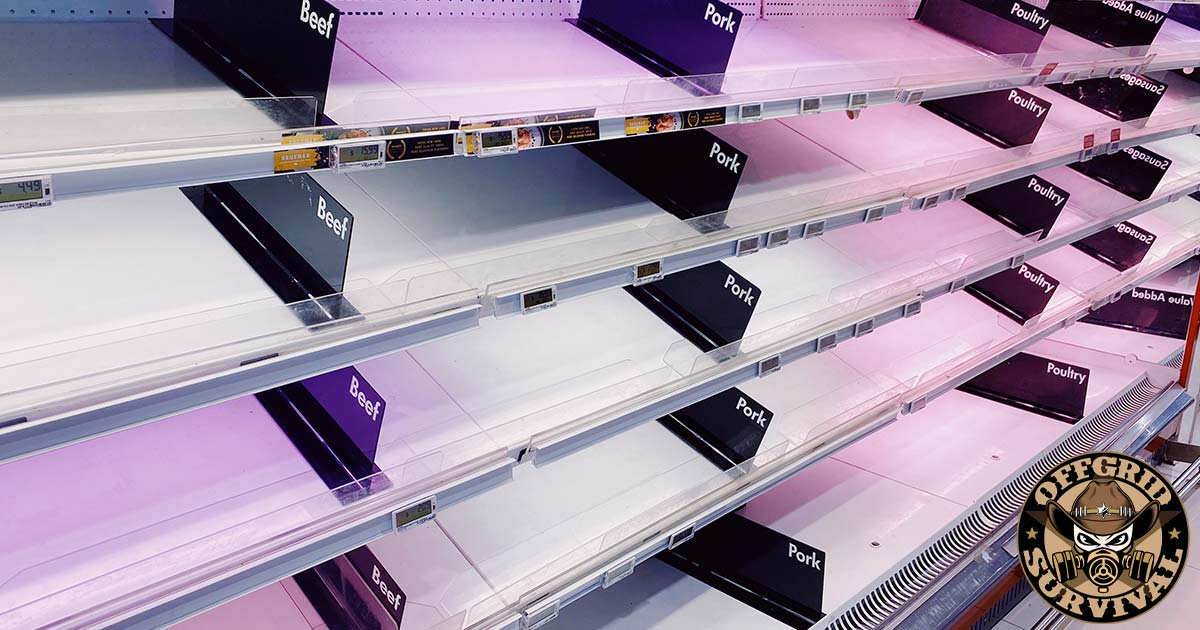
In the modern era, securing food has become something most people never think about, with the convenience of grocery stores and restaurants providing easy access to a wide variety of products. However, recent events, such as the COVID-19 debacle, have exposed the hidden complexities and vulnerabilities in the food supply chain, something we have been warning about for decades.
The system we use to deliver goods and services across the country is incredibly complex, but up until COVID it was relatively efficient. In fact, prior to the recent breakdown of our systems, our infrastructure has largely contributed to the overall growth of our country. While the distribution systems have added to our standard of living, the world is starting to wake up to the fact that it could also be our biggest downfall during a disaster.
The food supply chain, a vast network that encompasses farms, factories, transportation, and warehouses, relies on the efforts of over 19.7 million workers from various industries, as reported by the USDA. This intricate system, although robust, has a number of weaknesses. Even a seemingly minor disruption can escalate into a major catastrophe, leading to the collapse of the entire food supply chain.
FOOD SHORTAGES:
In the past, stores had large stock rooms with plenty of inventory; today, this simply isn’t the case. Most modern stores carry little to no inventory. The systems used by our stores, are setup to track and deliver products as they’re needed. While these systems allow stores to operate more efficiently, they’ve created a huge problem when it comes to our safety and security.
The food supply chain comprises six stages:
- Sourcing of ingredients and raw materials
- Production of the product
- Processing and packaging
- Storage
- Wholesale distribution
- Retail redistribution to consumers
Problems at any stage can lead to significant issues, putting the entire supply chain at risk.
The problem with our current infrastructure is its vulnerability to disruption. Even a small disruption to freight shipments could mean that your local grocery stores would be completely empty within a matter of hours.
If the problem was serious enough to disrupt the system for more than a couple of days, things would start to turn bad relatively quickly. Since most homes only have enough food to last until their next visit to the grocery store, society is literally a couple of hungry days away from total meltdown.
Once the system becomes clogged or stopped, total chaos will likely ensue. When a person starts to feel like they can’t provide for the basic needs of their family, you’ll quickly see normal people start to do some really crazy things.
Related Posts:
Resource:




After Katrina, when the southern refinery and transportation channels were impacted, we felt the logistical pinch in the SouthEast and Mid-Atlantic US as resupply was severely hindered… the experts say we’re only 3-5 meals away from utter chaos.
I was in crystal beach after Katrina and we fed,clothed and housed about 3000 people. It really made me think. most of these people had nothing but what they had on. not one of them was ready to try to make it on their own.they just waited for the feds to come and care for them.for some of them it just never happened.prepared or not, when disaster strikes don,t just sit down and wring your hands and wait for someone else to help you, get up and make something happen.after all what do you have to lose at that point?
My mother lived in Waveland when Katrina slammed into the Mississippi Gulf Coast in ’05, the house was about 3 blocks from the beach. She had the luxury of having a good car and enough money and enough sense to bug out well before the storm. Why anyone stay I will never be able to answer that, and I know quite a few who did.
The ones that were not able to leave New Orleans because the had no gas money or a car, that was part of the problem, while the mayor was supposed to be in New Orleans, he was actually in Dallas taking care of his family and not tending to city business, then started blaming everyone but himself when things went tits up. While he was setting his family up in a suite in Texas, he should have been commandeering all the city buses,he showed where his priorities laid. Bugging out and prepping takes more than desire and will. Those in NOLA weren’t even educated, shockingly, like they didn’t know they weren’t going to get their asses kicked one day, it is infuriating.